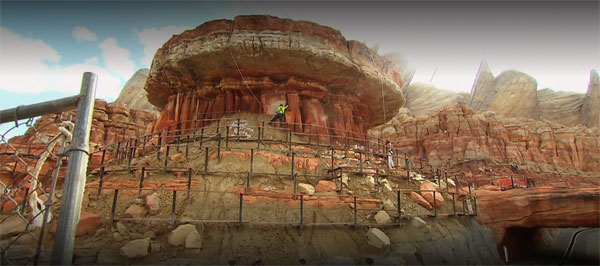
We’ve reached a tricky point in telling the story of Walt Disney Imagineering. Bob Iger has replaced Michael Eisner as the CEO of the Walt Disney Company in 2005. Unlike past episodes, “A Carousel of Progress” presents events under the current leadership. I’ve appreciated the candid look at the successes and failures during The Imagineering Story. Will that approach stop during the final two hours? The answer is mostly yes, but that doesn’t mean this episode falls short.
I’m hedging a bit here because this episode mentions the issues with both Disney California Adventure (DCA) and the Walt Disney Studios in Paris. Iger speaks directly about fixing DCA and even recalls that he wondered if it could be fixed. I appreciate the point that DCA 2.0 wasn’t just a situation where Disney wanted to plus the park. It needed serious help, not just a single attraction. A good portion of this episode takes a step-by-step approach through the upgrades to DCA. Kevin Rafferty takes center stage, including a hilarious clip of him pitching Toy Story Mania.
It’s easy to forget that Toy Story Mania was the first step to revitalize DCA when it opened in June 2008. The segment on programming Mr. Potato Head is a good reminder of its complexity. I always considered this attraction a safe bet, so it’s a surprise to hear concerns it went too far with the gaming component. The infusion of characters all points to ensuring that DCA feels like a Disney park and can stand comfortably alongside Disneyland. All the upgrades have the common thread of making DCA more of a warm and familiar place for guests.
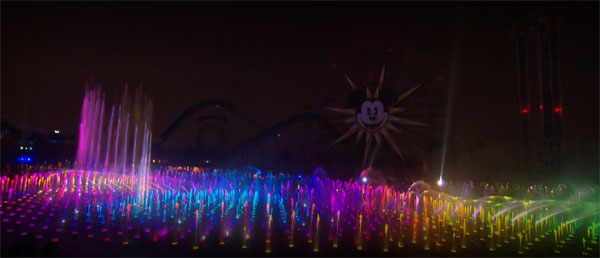
An Elegant Introduction
Setting aside the attractions, the change to DCA’s entrance drastically changed the tone of the entire park. Imagineer Ali Rubenstein explains the background of Buena Vista Street, especially the Carthay Circle Restaurant, and the connection to Walt Disney’s history. Removing the postcard entrance was another example of how Disney shifted to honor its past. Instead of focusing on California, the park became more about Walt’s time there. Connecting this entrance to the Carthay Circle Theatre (and the premiere of Snow White) built a more refined atmosphere from the start.
That elegance continued with the striking fountains of World of Color, another key factor in DCA’s resurgence. Steve Davison describes the challenges with creating this nighttime spectacular, especially with the fountains. The title directly ties the show to the Walt Disney’s Wonderful World of Color TV series. I enjoyed the behind-the-scenes footage of workers preparing the massive space for World of Color. The episode doesn’t spend too much time here but does present its importance to DCA’s progress.
The final piece of the puzzle is Cars Land, which originated as a car-themed land before the Pixar film. A highlight is seeing Kevin Rafferty stroll through the cars and explain his passion for the subject. The shots of his childhood make this part about more than just upgrading DCA. John Lasseter also finally appears to speak warmly about his love of Route 66. His clips are limited but not a surprise given his role in Cars Land. Bob Gurr also returns to connect Radiator Springs Racers to past classics like Pirates. His appearance reinforces that recent additions connect to WDI’s history.
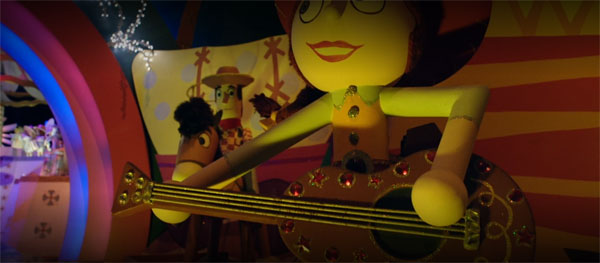
Resistance to Progress
Returning to Disneyland, segments on a few changes feel more awkward than I expected. In particular, the updates to “it’s a small world” focus on negative reactions from fans. Kim Irvine rightfully points out that the characters ultimately fit well inside the attraction. However, the show paints fans more as alarmists than just protectors of the park. I understand the need for Disney to stay fresh, and “it’s a small world” remains a great experience. My mixed reaction to this segment is more about tone. I would have appreciated a little more recognition for why fans were concerned.
A similar vibe appears in the segment about the seasonal update to The Haunted Mansion with The Nightmare Before Christmas. I’m sure it’s a challenge for Imagineers whenever they make changes to a signature attraction. That dilemma makes sense, and the vitriol can be out of control. It’s just a strange note given the rest of this series. I suspect the focus on progress under Iger fits with this subject. The shots of Kim Irvine appearing as Madame Leota in place of her mom provide a cool moment. It’s awesome that she had the chance to play that character and honor Leota Toombs.
A framing device for “A Carousel of Progress” is Iger’s three-pronged strategy — fresh creative content, new technology, and international. It’s an effective way to structure the episode to show the progress made under his leadership. The challenge is ensuring it doesn’t feel like a Disney commercial. This episode skirts that line but still provides engaging moments. I enjoyed the focus on technology, including the projection mapping and virtual reality. The recognition that it’s difficult to keep up with rapid changes also shows the obstacles facing the Imagineers today.
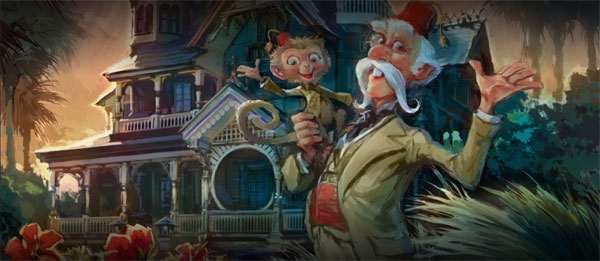
International Successes
Another highlight is the segment on Mystic Manor, a unique gem at Hong Kong Disneyland. Joe Lanzisero returns to discuss his project and the movement away from the typical Haunted Mansion. I loved seeing the footage of composer Danny Elfman crafting the score. It’s a key element of Mystic Manor and really drives the story forward. Watching Elfman reviewing the model of a scene provides an interesting look at the creative process for Imagineering.
We also return to Paris for Ratatouille: The Adventure, which gave a major boost to the Walt Disney Studios. Tom Fitzgerald describes the attraction as a “modern day Mr. Toad’s Wild Ride”, which is an interesting concept. I visited the park before Ratatouille opened, so I’m looking forward to experiencing it at Epcot. The behind-the-scenes footage does a good job in showing the skill needed to mix the screens and physical sets and keep all the trackless vehicles in the right location.
The episode concludes with an emotional look at the challenges faced by Japan following the 2011 Tōhoku earthquake and tsunami. The compassion from Daniel Jue about Disney’s role in helping guests is quite moving. When Tokyo Disneyland opened, his point that the park was “safe and reassuring” hits home. It presents a strong reminder of the real world connections to the parks. Imagineering is creating entertainment, but their work means so much to guests around the world.
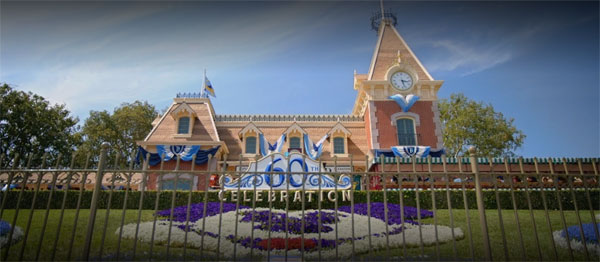
Other Articles: The Imagineering Story, “A Carousel of Progress”
“The Happiest Place on Earth”, Episode 1



Leave a Reply